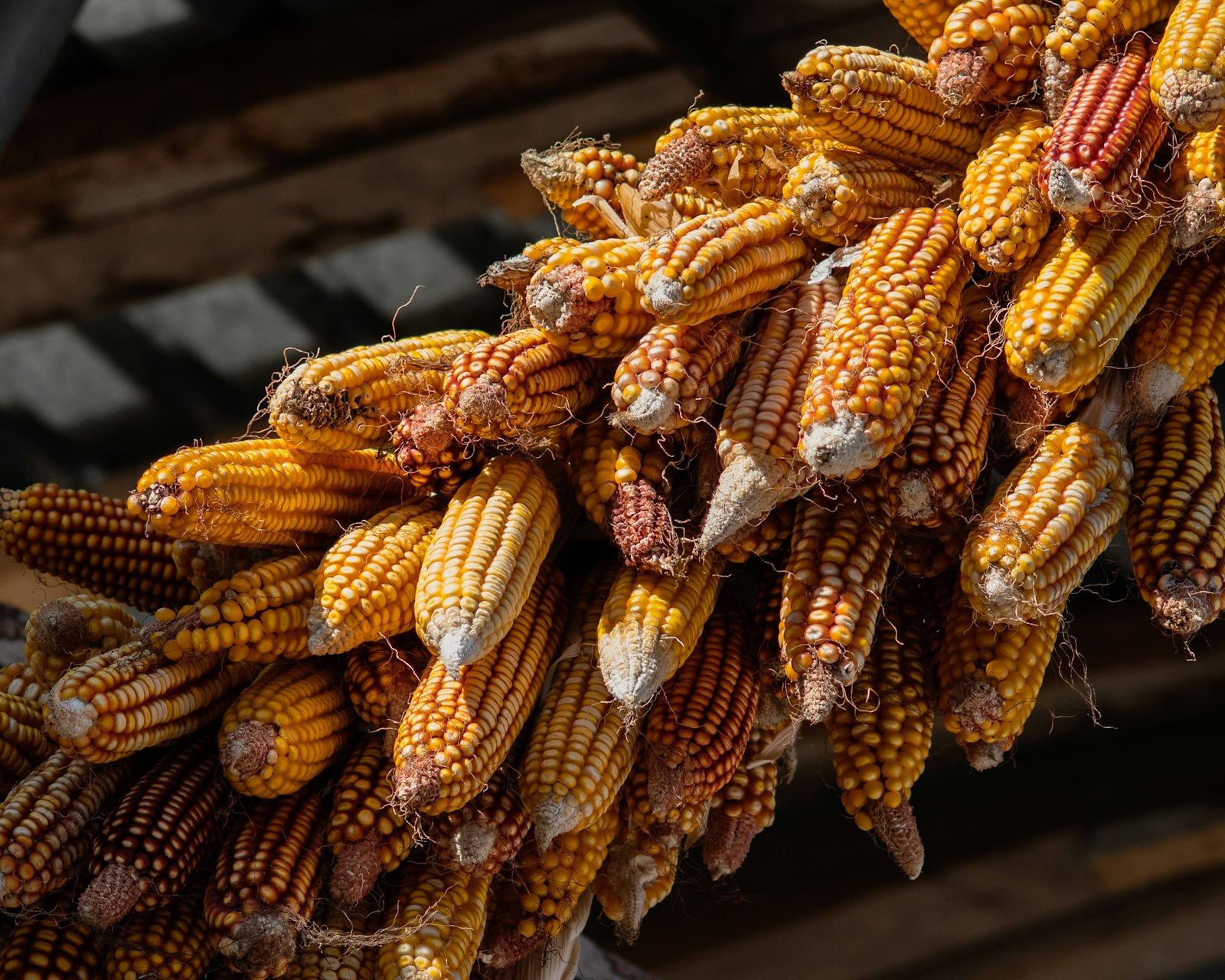
Resilient Roots: Indigenous Agriculture and Climate Change in Latin America01.Jan.2025
Harvard International Review
In Guatemala and Mexico, the milpa system is an Indigenous practice that increases soil fertility and crop yields. This system involves intercropping, the cultivation of diverse crops in the same plot. Along with most Indigenous knowledge, it is typically maintained by the women of agricultural communities. Women are responsible for selecting the crops that will be planted, overseeing the rotation of the crops, harvesting the crops, and preparing meals for consumption or products for selling. Their dedication to these native practices has led not only to agricultural prosperity but also climate resiliency due to the diversity and strength of their crops.
In efforts to provide more nutritious foods, generate a greater variety of crops, and establish their role in agriculture, women are creating a more sustainable food system. These agricultural practices not only demonstrate how sustainable procedures help the economy and provide food for communities; they also contribute to the fight against climate change. Many countries are involved, but the common customs found in communities in Peru, Mexico, and Guatemala have proven eye-opening.
Across these three countries, the agricultural practices are not only female-led, but also rooted in Indigenous knowledge. Studies have shown that Indigenous agricultural and conservation practices are a key way to produce local climate adaptation strategies. These practices yield large quantities of highly nutritious crops that sustain communities in a way that conserves and restores the land. This combination of natural climate mitigation and heightened agricultural production places Indigenous women at the forefront of resilience against the negative effects of climate change in Latin America.
Laramate and Kichwa Women in Peru
In the Laramate district of Peru, the revival of Indigenous practices occurred when the negative effects of climate change on crop yields became increasingly apparent. A decline in production led women in the community to revive traditional Indigenous practices—such as eliminating agrochemicals, rotating crops for soil fertility, and efficient irrigation—to produce healthier crops.
Training and education efforts about these practices are supported by the Centro de Culturas Indigenas del Peru (CHIRAPAQ), which receives funding from the UN Women’s Fund for Gender Equality. This program provides Indigenous women with training on these Indigenous agricultural practices. For example, the training inspired Lucia Rupire to emulate her father and grandfather by fertilizing with manure from cows, sheep, and alpaca: “I started doing the same after the trainings because I understood that the techniques of my ancestors respected the environment while improving fertility of the soil and improving our health. Now we have learned to prepare even better organic manure…my husband is astonished by what we have harvested!”
Indigenous women have explained that implementing these ancestral practices has not only helped the soil become more fertile but has also provided economic benefits. This agricultural transition has allowed women to sell the surplus crops and seeds. For a community that was struggling to produce enough for its members, the ability to sustain families and have enough to generate income has been life-changing. For example, Carmen Tenorio from the Yauca community described how her family enjoys more food and income: “In the past we only sowed potatoes, we just ate a bit of wheat… We couldn’t afford buying anything. Now I grow my own vegetables and our food is better because I combine it with vegetables. Part of what I sow, I cook for myself and I sell the rest to earn some money.”
In other Peruvian regions home to the Kichwa, Indigenous women are taking a different approach to the negative impacts of climate change. The people in this region have a history of rotating seeds and planting year-round, but these practices are at risk of disappearing due to the increasing amount of farmland dedicated for singular crops such as coffee or cacao. While these cash crops have the potential to bring in a large profit, they are more vulnerable to adverse environmental conditions, and the lack of diversification is often damaging to the soil.
Recognizing this problem, the women of the community have increasingly advocated for shared gardens across multiple Kichwa communities. These shared gardens are characterized by a diverse array of crops that are native to the region, such as daledale, a root vegetable, and majambo, a type of yellow gourd. These gardens have reduced food insecurity in rural areas, as Luz Sinarahua—leader of female farmers in Chirikyacu—described: “Food prices are increasing. Sometimes we don’t have money for bread. That’s why we’re glad to have the beans, yucca, and plantains from the garden.” The goal of this shared garden program is not only to protect Indigenous cultural traditions and provide enough food, but also to sell excess produce, similar to the women of the Laramate district.
The incorporation of Indigenous practices into agricultural systems has made them more resilient. Crop rotation, selecting native crops, and eliminating chemical use have revitalized the soil and farmlands of these Peruvian regions. These insights highlight the importance of diversification in agriculture and the impacts of reducing chemical use. Heeding the calls of Indigenous women in Peru has established food security, incurred economic benefits for their communities, and enhanced environmental sustainability.
Milpas in Mexico
In a similar vein, reviving a specific Indigenous agricultural system in Mexico has helped women combat climate change and preserve traditional practices. This system, known as a milpa, grows diverse crop species within the same space, especially maize, beans, and squash. These systems only incorporate crops that are native to the land, which are often complementary and provide mutual benefits. For example, bean plants fix nitrogen that can be absorbed by other plants, while maize physically supports and shades beans. Similar to the processes in Peru, this diversification helps maintain healthy soils and provides essential nutrients to the harvesting communities. Numerous studies indicate that milpas are more productive and resilient than monocultures featuring single crops. Milpas are also culturally important for Indigenous peoples such as the Maya.
Across Mexico, efforts are being made to increase the presence of milpas in a culture dominated by cash crop farming. Given growing concerns about the adverse effects of climate change on agricultural yields, the key to promoting this practice has been through education about how milpas are resilient in the face of climate change. Milpa systems help maintain healthy soils; increase biodiversity; conserve water; reduce erosion; and lower temperatures of surrounding areas. The most important aspect of these systems, however, is that in times of food scarcity or global economic interruptions, farmers will have a secure source of food.
Women are typically at the forefront of maintaining these systems; they possess the knowledge of these practices and are responsible for making the food from the yields of milpas. For example, in Chiapas, a state in Mexico, women use the corn from harvests to create tostadas—a typical food in the region—and other products that are not only for community consumption, but are also sold to markets outside the community. Therefore, just like in Peru, these women are both responsible for cultivating nutritious foods to feed their communities and are able to earn income when there is a crop surplus. These community benefits are coupled with increased resilience to the changing environment, which allows women to continue to provide for their communities.
This Indigenous system in Mexico maintains agricultural yields in a sustainable and climate-resilient fashion. Women lead the milpa systems and will continue to support their communities with this practice. As climate change worsens, women will be able to pass down the tradition of milpas to guarantee the continued viability of this resilient agricultural infrastructure.
Mam in Guatemala
Guatemala’s Indigenous communities also promote the milpa system similar to those in Mexico while advocating for their own practices such as K’uxu’rum—which co-cultivates corn, beans, and madre cacao trees—and the incorporation of organic fertilizers. Women play a central role in communicating and encouraging these practices, driving the expansion of and transition towards Indigenous knowledge in agricultural systems across the country.
There has been an increased effort to promote Indigenous styles of farming, which are often small-scale but resilient to climate change. In Guatemala, women have promoted seed exchanges, adjustments to agricultural calendars, and expansion of the milpa system. For example, the Maya-Mam women in Guatemala have established a nursery for seedlings. This nursery was created when the surrounding land started to decay due to industrial mining activity and climate disasters. As one elderly woman in Tuixcajchis described: “The streams that flowed here before are dying. Our harvests were once plentiful, but today there’s only desert. We don’t want our children and grandchildren to inherit this reality.”
The protection of seedlings was also implemented because industrial-scale agriculture companies were attempting to sell these women seedlings that would not survive in the region’s ranging weather conditions. Women also gather at this nursery to share strategies for land preservation and their experiences with farming. While this practice is small and not seen everywhere in Guatemala, the community-oriented preservation of seedlings has created more resilient biodiversity in the area, enabling harvests under harsh conditions.
In addition to the protection of native seedlings and incorporation of milpas, the K’uxu’rum system has also enhanced resilience against climate change and food insecurity. The K’uxu’rum system is mainly implemented in the Dry Corridor of Guatemala and promotes the natural regeneration of soil. The main crops grown are corn, beans, and cacao trees. The interactions among these crops improve soil moisture retention and the cycling of nutrients, allowing these crops to withstand long droughts and adverse conditions. The practice emerged from the revitalization of Indigenous practices and provides crucial resilience to droughts in the area.
Recognizing Inequality and Moving Forward
Despite the irreplaceable role Indigenous women play in leading resilience against climate change in the agricultural sector, they still face inequality within these countries. They often suffer from discrimination based on gender, and outside of Indigenous communities, they are less likely to own land compared to men. Furthermore, they are more vulnerable to health risks and malnutrition. Given these disproportionate risks, these women are increasingly concerned about climate change, which has the potential to exacerbate the inequality that they already face.
As demonstrated in these examples from Peru, Mexico, and Guatemala, Indigenous women are at the forefront of climate resilience, but their efforts are often unrecognized. As these women are typically responsible for communicating Indigenous practices and conserving land, international organizations are calling for their inclusion in decisions about climate change resilience. UN programs are promoting the role of women in the agricultural sector both by facilitating access to education as well as economically supporting the implementation of sustainable systems.
Nicolette Reale is a staff writer for the HIR. She is a junior studying Government and Psychology with interests in environmental justice, Latin American policy, urban planning, and human rights law.












 S
S






 A women’s necklace from Atelier Scheilt Création, made with pearls, thread and wooden beads, is available for purchase. Courtesy photo
A women’s necklace from Atelier Scheilt Création, made with pearls, thread and wooden beads, is available for purchase. Courtesy photo

